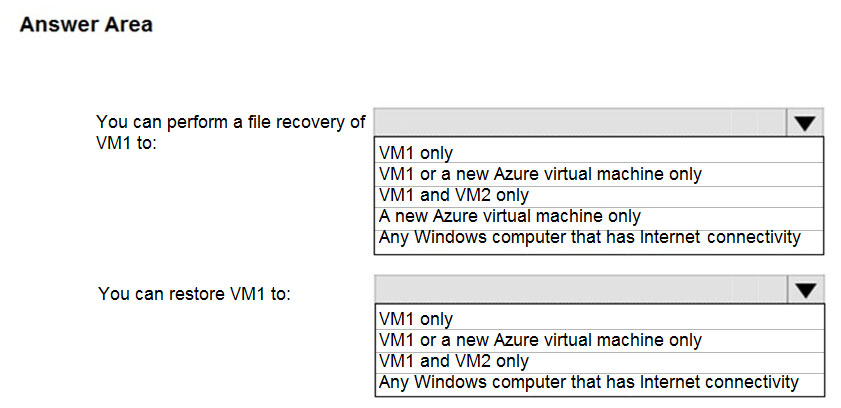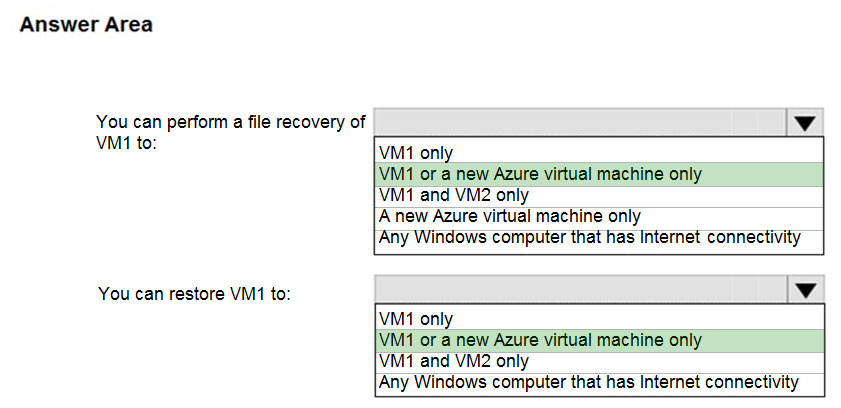
Expert Verified, Online, Free.

HOTSPOT -
You have an Azure subscription named Subscription1. Subscription1 contains two Azure virtual machines VM1 and VM2. VM1 and VM2 run Windows Server
2016.
VM1 is backed up daily by Azure Backup without using the Azure Backup agent.
VM1 is affected by ransomware that encrypts data.
You need to restore the latest backup of VM1.
To which location can you restore the backup? To answer, select the appropriate options in the answer area.
NOTE: Each correct selection is worth one point.
Hot Area:

mlantonis
Highly Voted 2 years, 11 months agoLkk51
2 years, 11 months agojuniorccs
1 year, 11 months agoHerald3883
1 year, 7 months agoSanjSL
2 years, 6 months agoKizz
2 years, 5 months agoDrMiyu
1 year, 10 months agoBatiste2023
5 months, 2 weeks agoGBAU
1 year, 2 months agobartfto
12 months agoHalisson
8 months agoki01
4 months, 1 week agofedztedz
Highly Voted 3 years, 4 months agoMeesaw
3 years, 4 months agoNetspud
2 years, 3 months agomagichappens
2 years agodiligent176
3 years, 4 months agoMiles19
3 years agoKOSACA
3 years, 3 months agoGenjamBhai
1 year, 10 months agooshoparsi
3 years agotashakori
Most Recent 1 month, 1 week agophoton99
6 months, 1 week agooopspruu
8 months, 1 week agoJosete1106
9 months, 1 week agoRandomNickname
10 months, 3 weeks agoMadbo
1 year agoRams_84zO6n
1 year, 1 month agoAK4U
1 year, 1 month agozellck
1 year, 2 months agoSedateBloggs
1 year, 2 months agoAzureG0d
1 year, 5 months agoShivz81
1 year, 6 months agoMohd1899
1 year, 2 months agomajerly
1 year, 6 months agoEmnCours
1 year, 8 months agoNotMeAnyWay
1 year, 9 months ago